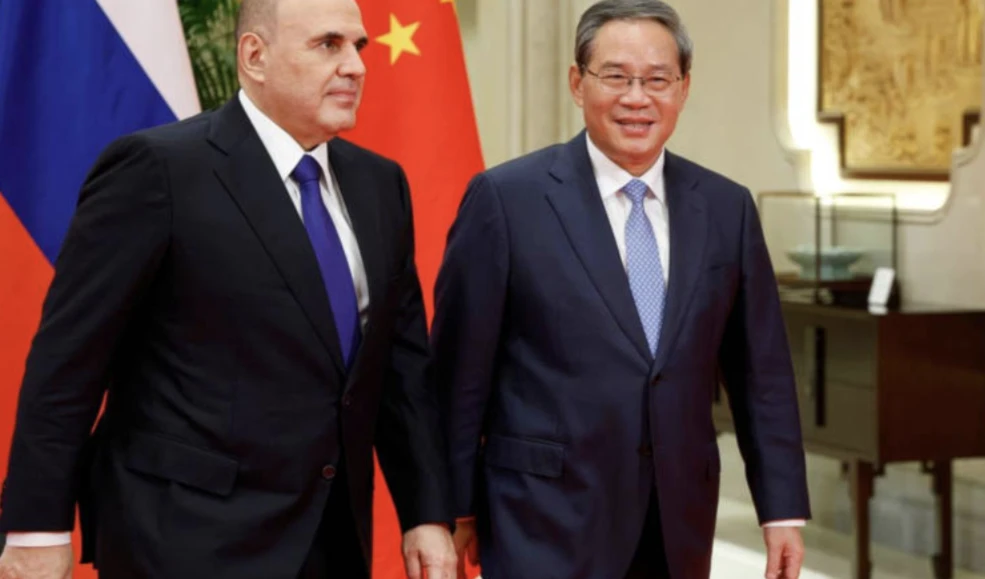Chinese Premier Li lands in New Zealand for talks with PM
China’s Premier Li Qiang is officially welcomed in Wellington before meeting with New Zealand’s prime minister, marking the highest-level Chinese visit in seven years.
-

Chinese Premier Li Qiang (center) stands with Prime Minister Christopher Luxon (left) and New Zealand Governor General Dame Cyndi Kiro during the official welcome ceremony in Wellington, New Zealand on June 13, 2024. (AP)
China’s Premier Li Qiang was formally welcomed on Thursday with a traditional ceremony in Wellington, New Zealand's capital. This event preceded his meeting with the country's prime minister and marks the highest-level Chinese visit in seven years.
Li was greeted on the lawns of Government House, the governor-general's residence, by the Prime Minister and the Governor-General. He participated in a traditional Indigenous Maori welcome before heading inside for meetings.
"My visit this time aims to renew our traditional friendship, advance mutually beneficial cooperation and promote common development of both countries," Li said in a statement released by the Chinese embassy in Wellington earlier on Thursday.
New Zealand's relationship with China has significantly evolved since the last visit by a Chinese premier in 2017, moving away from its once moderate stance.
Prime Minister Christopher Luxon said Li's visit was an opportunity for businesses to strike deals, and there were "massive areas of cooperation with China, particularly in the areas of trade, energy, climate change".
He added that differences would also be discussed. Luxon mentioned he expected some announcements to be made over the next two days. Meanwhile, Chinese-New Zealanders gathered at a central city hotel to greet the premier, holding banners supporting China’s relationship with New Zealand, waving Chinese flags, and beating drums.
Tensions increasing in Asia-Pacific
Amid several past accusations against China's presence threatening the region, it is worth highlighting that the United States has been ramping up tensions in the Asia-Pacific region through the formation of the AUKUS alliance and increasing arms deals with Taiwan.
AUKUS, a trilateral security pact between the US, UK, and Australia, aims to contain China by enhancing military alliances and enabling Australia to acquire nuclear-powered submarines.
Additionally, the US has intensified its support for Taiwan by approving significant arms sales, including advanced missile systems and military technology. These are seen by China as provocative, heightening regional tensions and contributing to an increasingly complex geopolitical landscape.
On that note, on Monday, Chinese Vice Foreign Minister Sun Weidong stressed that the US is currently the biggest military threat in the South China Sea because it is turning the region into “the whirlpool of an arms race.”

 3 Min Read
3 Min Read










